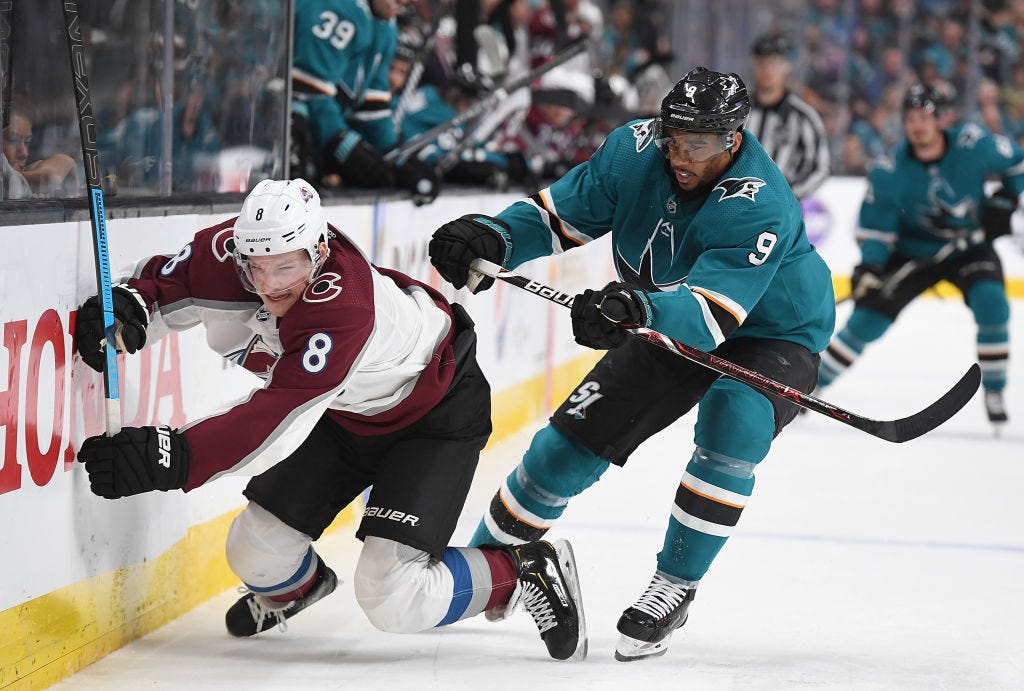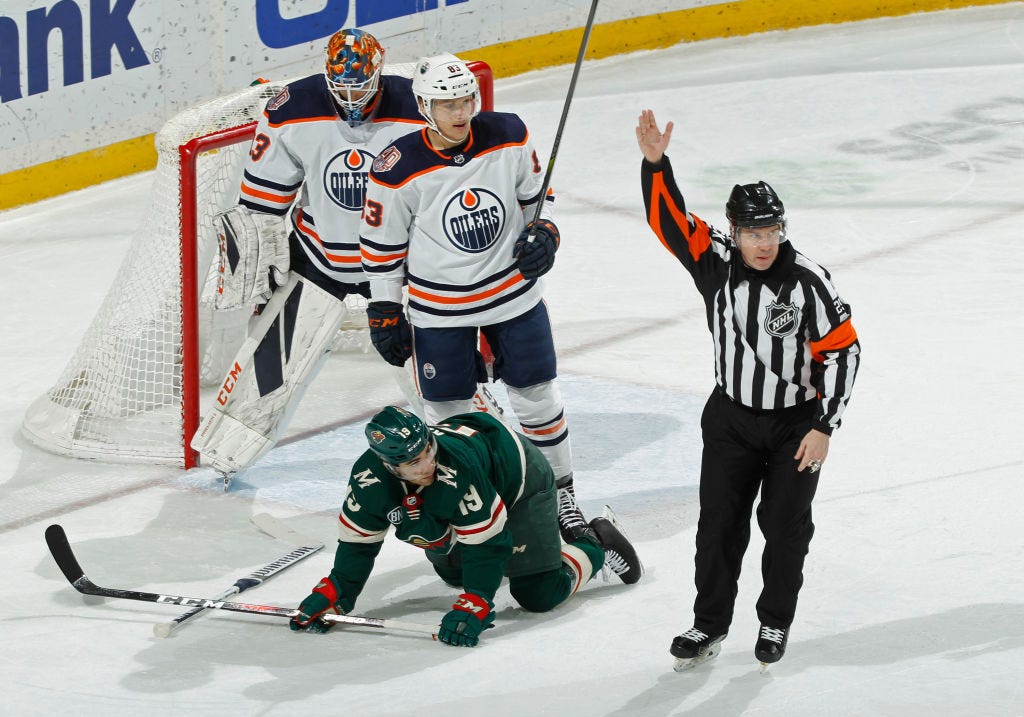Here's the NHL's five-point plan to combat crosschecking next season
There will be a crackdown in 2021-22 along the lines of the one we saw four years ago on slashing to the hands. Will it be enough to rid the league of its newest scourge?
If the NHL accomplishes with its proposed crosschecking crackdown next season what it did with slashing four years ago, we can expect the casual, gratuitous crosscheck that has been a scourge on the game to become a thing of the past. But, as is the case in anything to do with the NHL and its ability to enforce its own rulebook, that’s a very, very big ‘if.’
This much we know. Crosschecking has reached epidemic proportions in the NHL and is largely going uncalled. This past season, there were just 261 crosschecking minors assessed (according to espn.com), for an average of just 0.3 per game. Slashing, meanwhile, was called more than twice as often, 575 times, for an average of 0.66 per game. At the GMs’ meeting Monday afternoon, the managers talked for two hours about crosschecking. NHL hockey operations director Colin Campbell had about 40 examples of uncalled crosschecks that he had previously sent to GMs, who voted on whether they thought it merited a penalty. They went over their votes, discussed what they’d like to see and passed their recommendations on to the competition committee, which met the next day.
After two more hours of discussion, they came to a consensus and gave their recommendations to Stephen Walkom, the NHL’s director of officiating, who was in both meetings and who will set the new guidelines with the on-ice officials in their training camp in the fall. Here’s what we can expect to see in 2020-21:
Hockey Unfiltered with Ken Campbell is a reader-supported platform. Both free and paid subscriptions are available. Those who want to support my work are encouraged to take out a paid subscription.
First, there is no rule change here that needs to be approved by the board of governors. The crosschecking rule is spelled out very clearly in the NHL rulebook, but enforcement of it has lagged badly in the past couple of years. That’s largely because players have seen increasingly lax standards being applied by referees and they’ve naturally taken advantage of it. “It’s one of those things where it’s gone from an inch to a foot-and-a-half,” one GM said. “Nobody likes where it’s at. It’s very similar to the stick to the hands, and I think everyone is comfortable where that is right now.”
The front of the net will be a key area of focus, as it should. Not only does crosschecking in that area of the ice contribute to forwards wearing down and eliminating scoring chances, it also puts players in danger. In March, then-Buffalo Sabres winger Taylor Hall took a puck in the face on a shot off teammate Colin Miller, but the injury occurred because New Jersey Devils defenseman P.K. Subban crosschecked Hall into the path of the puck. “That’s a dangerous play,” said Edmonton Oilers GM Ken Holland, who is part of the competition committee.
Referees will also be instructed to look for the crosschecks where both arms are extended with force. If players use the stick to ‘box out’ or they keep their arms tight to their bodies and use their weight and leverage to move opposing forwards, that will continue to be considered a hockey play. “We’ve got to let guys defend,” Holland said, “otherwise every game will be 9-8.”
Multiple crosschecks will be penalized, which is where things will still probably be fairly fuzzy. How many crosschecks are acceptable? How about zero? The league doesn’t seem to have a problem with one or two light crosschecks, but if it allows those, it could only be a matter of time before players begin taking that inch and turning it into a foot-and-a-half again. Standards sometimes erode and that’s where the league gets into a lot of this trouble in the first place. “At some point and time, you can say, ‘Well, it’s five little ones,’ but it’s five crosschecks,” Holland said. “Why do you have to keep crosschecking a guy?”
The gratuitous, casual crosscheck that has nothing to do with the play, and is usually away from the play, will be penalized more heavily. You’ve seen them. They’re the ‘message sending’ crosschecks, the kind you see early in games and playoff series to let an opponent know he’s in for a long night.
Is this perfect? No, it is not. In fact, it’s not even close. There are a lot of people in the hockey world who would prefer referees simply penalize crosschecking every time they see it, regardless of intent, where the puck is or the severity of the infraction. You know, call the rule as it’s written in the rulebook. But it appears a sweeping crackdown isn’t going to happen. So the league is hoping that this will have the same effect as the crackdown on slashing has had. In 2016-17, NHL referees called just 791 slashing penalties. After a rash of star players suffered broken fingers and hands, the league instructed its referees to call every slash on the upper two-thirds of the stick, basically anything anywhere near the hands. Slashes to the lower part of the stick were still tolerated, but anything that put a player’s hands or fingers in peril was called.
In 2017-18, with another team added to the league, referees called a total of 1,249 slashing penalties. That number has gone progressively downward every season since, to the point where in 2020-21 there were basically the same number of slashing calls per game as there were before the crackdown. The only difference now is that players, knowing it will be called more frequently, have adapted to the standard and now slashing is no longer the problem it once was.
“If we could do it with slashing,” one GM said, “I don’t see any reason why we can’t do it with crosschecking.”





